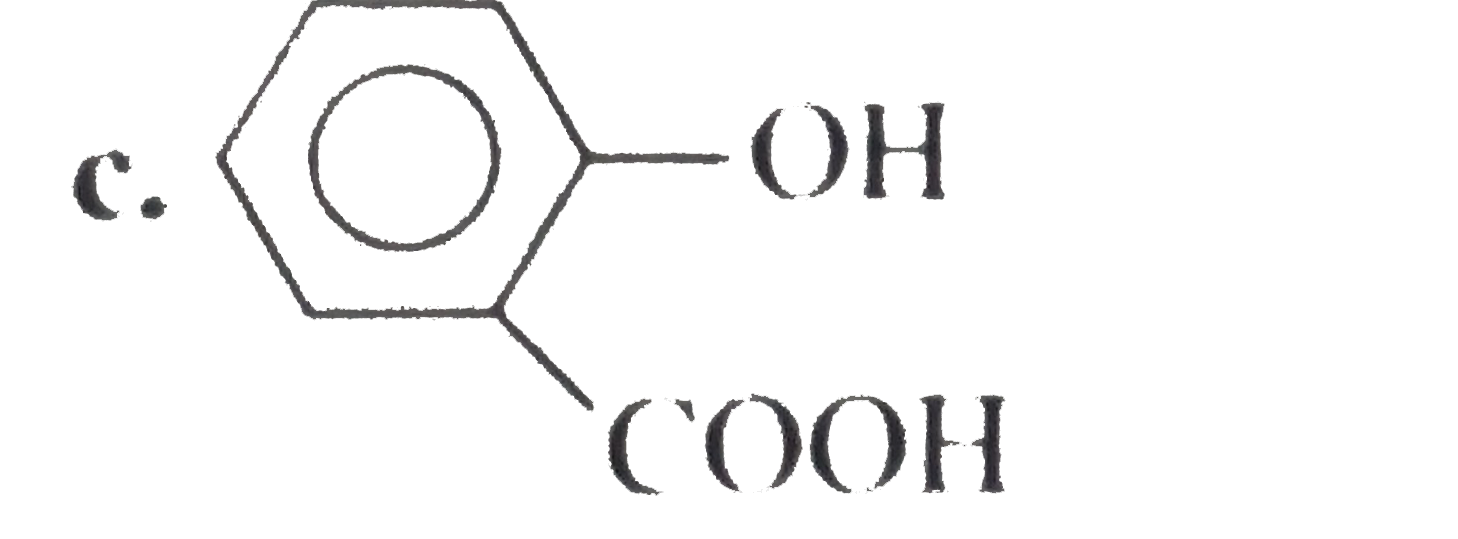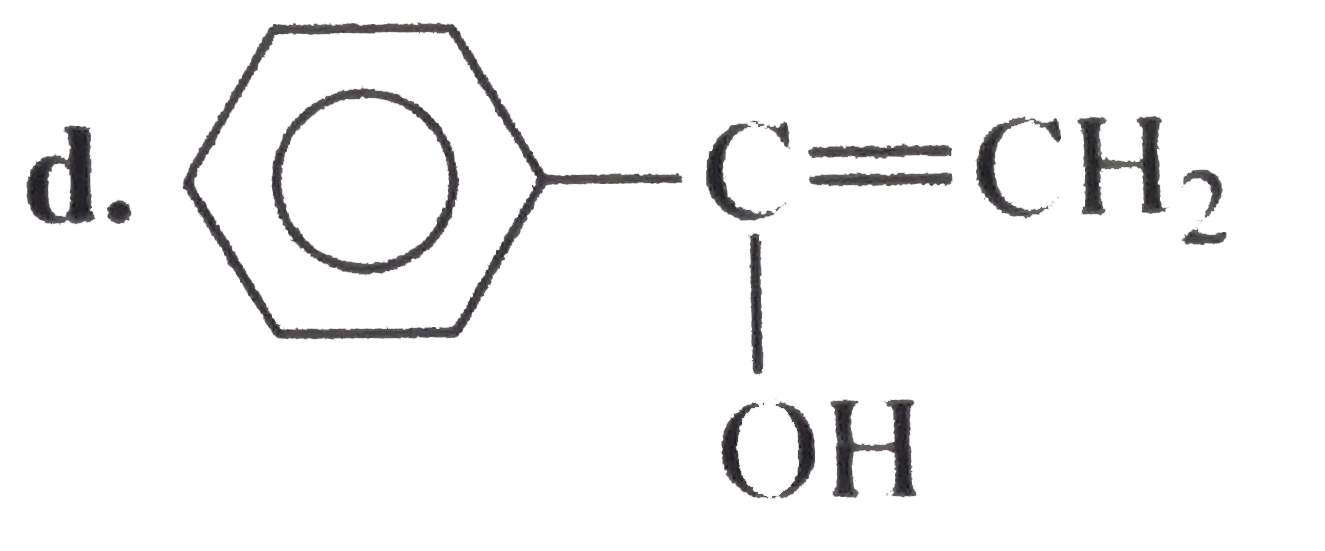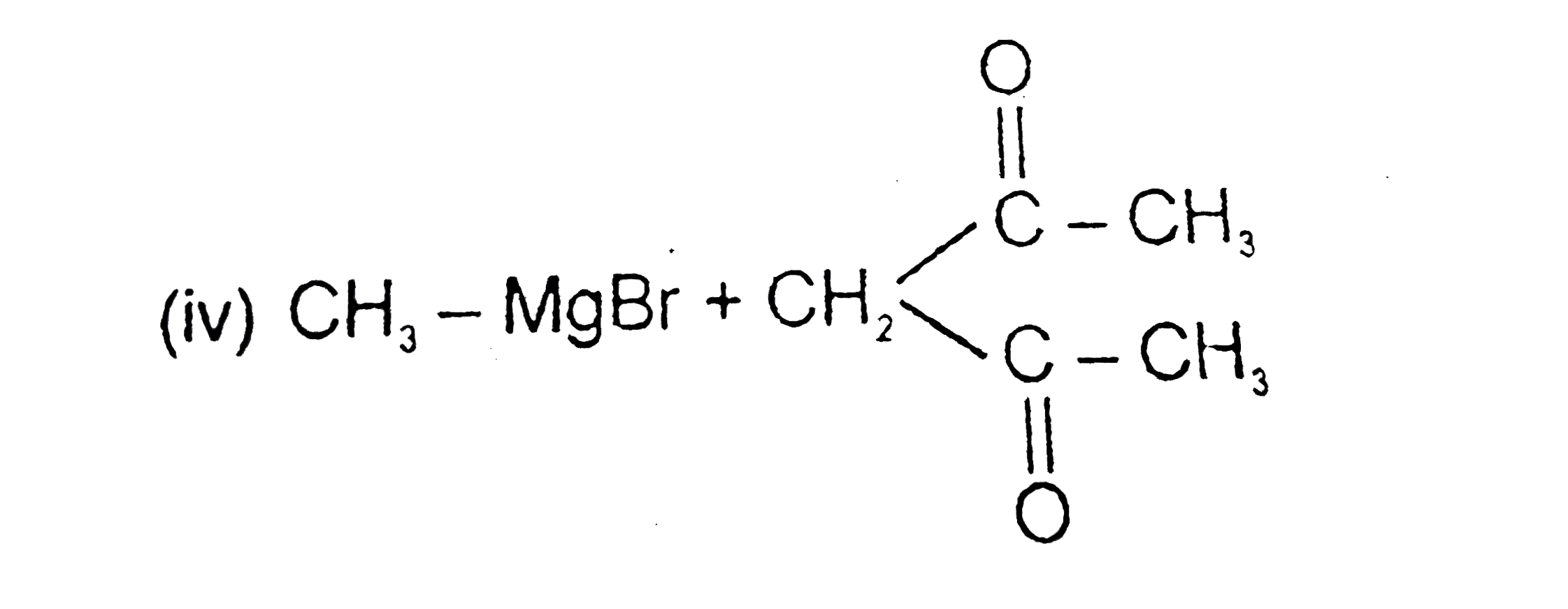Which of the following cannot be acetylated with CH3COCl/Py ?
MeCOOH
CH3NH2


The correct Answer is:A
To determine which of the given compounds cannot be acetylated with acetyl chloride (CH3COCl) in the presence of pyridine, we will analyze each option based on their functional groups and reactivity.
1. Understanding Acetylation:
Acetylation is a chemical reaction where an acetyl group (CH3CO-) is introduced into a compound. This reaction typically occurs with compounds that have nucleophilic sites, such as alcohols and amines.
2. Analyzing Each Option:
- Option A: Acetic Acid (CH3COOH)
Acetic acid has a carboxylic acid functional group. In the presence of acetyl chloride, it does not react because the carboxylic acid group is not nucleophilic enough to undergo acetylation. Therefore, acetic acid cannot be acetylated.
- Option B: Primary Amine (RNH2)
Primary amines contain an amino group (NH2), which is nucleophilic. When treated with acetyl chloride, the amino group will react and form an acetamide. Thus, this compound can be acetylated.
- Option C: Ortho-Hydroxybenzoic Acid (Salicylic Acid)
This compound has both a carboxylic acid and a hydroxyl group. The hydroxyl group is nucleophilic and can react with acetyl chloride to form an ester. Therefore, this compound can also be acetylated.
- Option D: Alcohol with a Phenyl Group
This compound has an alcohol functional group (-OH), which is also nucleophilic. It can react with acetyl chloride to form an ester. Hence, this compound can be acetylated as well.
3. Conclusion:
After analyzing all options, we find that only Option A (Acetic Acid) cannot be acetylated with CH3COCl in the presence of pyridine. The other options (B, C, and D) can undergo acetylation.
Final Answer:
Option A: Acetic Acid (CH3COOH) cannot be acetylated with CH3COCl in the presence of pyridine.
Acetylation is a chemical reaction where an acetyl group (CH3CO-) is introduced into a compound. This reaction typically occurs with compounds that have nucleophilic sites, such as alcohols and amines.
- Option A: Acetic Acid (CH3COOH)
Acetic acid has a carboxylic acid functional group. In the presence of acetyl chloride, it does not react because the carboxylic acid group is not nucleophilic enough to undergo acetylation. Therefore, acetic acid cannot be acetylated.
- Option B: Primary Amine (RNH2)
Primary amines contain an amino group (NH2), which is nucleophilic. When treated with acetyl chloride, the amino group will react and form an acetamide. Thus, this compound can be acetylated.
- Option C: Ortho-Hydroxybenzoic Acid (Salicylic Acid)
This compound has both a carboxylic acid and a hydroxyl group. The hydroxyl group is nucleophilic and can react with acetyl chloride to form an ester. Therefore, this compound can also be acetylated.
- Option D: Alcohol with a Phenyl Group
This compound has an alcohol functional group (-OH), which is also nucleophilic. It can react with acetyl chloride to form an ester. Hence, this compound can be acetylated as well.
After analyzing all options, we find that only Option A (Acetic Acid) cannot be acetylated with CH3COCl in the presence of pyridine. The other options (B, C, and D) can undergo acetylation.
Option A: Acetic Acid (CH3COOH) cannot be acetylated with CH3COCl in the presence of pyridine.
Topper's Solved these Questions
- CARBOXYLIC ACIDS AND THEIR DERIVATIVESBOOK - CENGAGE CHEMISTRY ENGLISHCHAPTER - CARBOXYLIC ACIDS AND THEIR DERIVATIVESEXERCISE - Exercises (Assertion-Reasoning)
10 Videos
- CARBOXYLIC ACIDS AND THEIR DERIVATIVESBOOK - CENGAGE CHEMISTRY ENGLISHCHAPTER - CARBOXYLIC ACIDS AND THEIR DERIVATIVESEXERCISE - Exercises Archives (Single Correct)
10 Videos
- CARBOXYLIC ACIDS AND THEIR DERIVATIVESBOOK - CENGAGE CHEMISTRY ENGLISHCHAPTER - CARBOXYLIC ACIDS AND THEIR DERIVATIVESEXERCISE - Exercises (Multiple Correct)
34 Videos
- BIOMOLECULESBOOK - CENGAGE CHEMISTRY ENGLISHCHAPTER - BIOMOLECULESEXERCISE - Exercises Archives (Analytical And Descriptive)
8 Videos
- CHEMICAL KINETICSBOOK - CENGAGE CHEMISTRY ENGLISHCHAPTER - CHEMICAL KINETICSEXERCISE - Archives Subjective
23 Videos
Similar Questions
Knowledge Check
Which of the following is an electrophile ?
NH3
AlCl3
OH−
CH3−O−CH3ANH3BAlCl3COH−DCH3−O−CH3Which of the following has an asymmetric carbon atom ?
(a)CH3−CH2−CH2Br
(b)CH3−H∣C∣Br−C∣CH3H−CH3
(c)CH3−cH2−Br∣C∣CH3−CH3
(d)CH3−∣CH3∣C∣Br−CH2−CH2−CH3ACH3−CH2−CH2BrBCH3−H∣C∣Br−C∣CH3H−CH3CCH3−cH2−Br∣C∣CH3−CH3DCH3−∣CH3∣C∣Br−CH2−CH2−CH3Which of the following reagents cannot be used for differentiation between CH3CHOandCH3−C∣∣O−Ph ?
ANaOIBTollen's reagentCH2N−OHDPh−NH−NH2
Which out of the following does not react with acetyl chloride? (i)CH3NH2(ii)(CH3)2NH(iii)(CH3)3N
View SolutionWrite short notes on the following:
Acetylation
View SolutionIn which of the following reaction CH4 will be obtained?
i. CH3−MgBr+CH3−C≡CH
ii.
iii. CH3−MgBr+CH3OH
iv
View SolutionWhich of the following compounds is most susceptible to a nucleophilic attack at the carbonyl group?
(a)CH3COOCH3
(b)CH3CONH2
(c)CH3COOCOCH3
(d) CH3COCl
View SolutionWhich of the following pesticides is an acetyl cholinesterase inhibitor
View Solution
